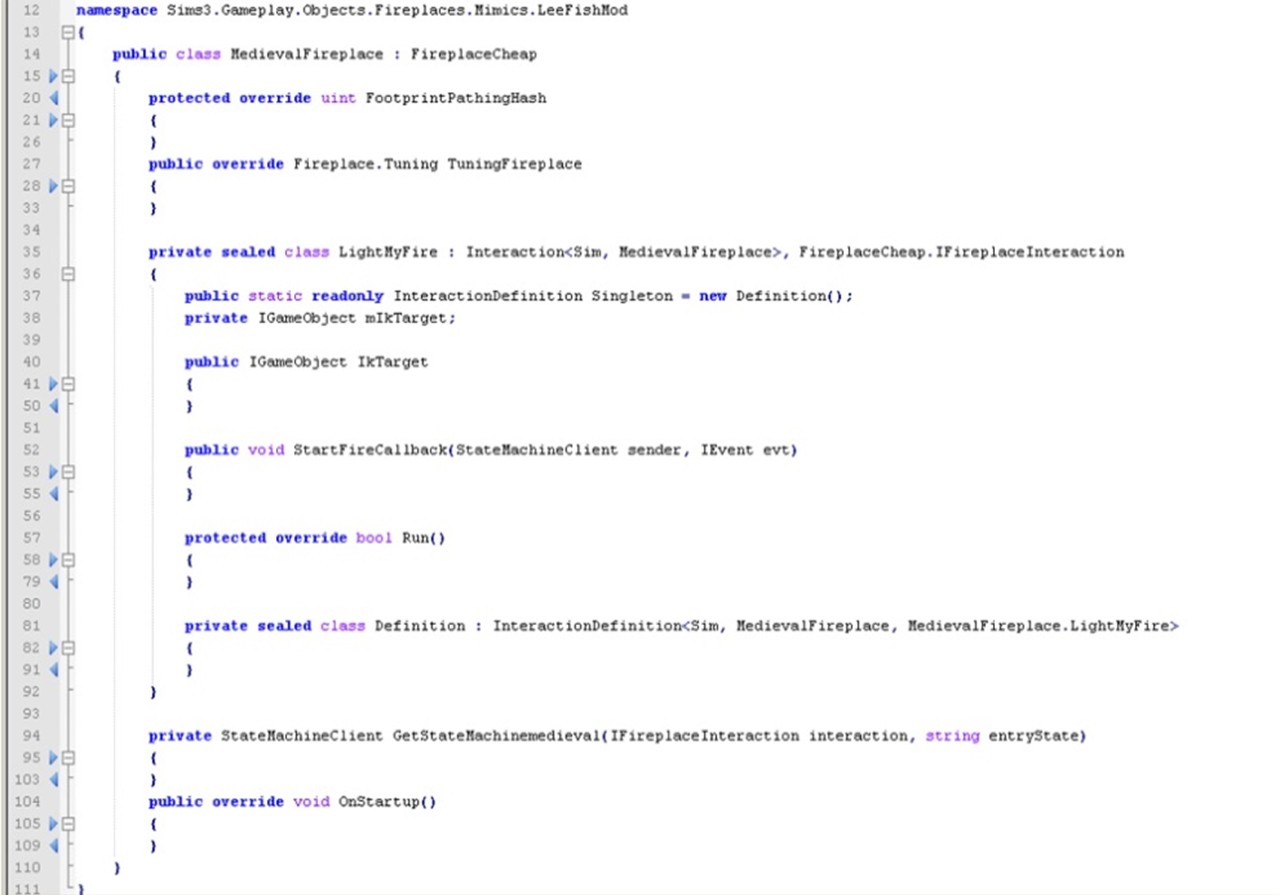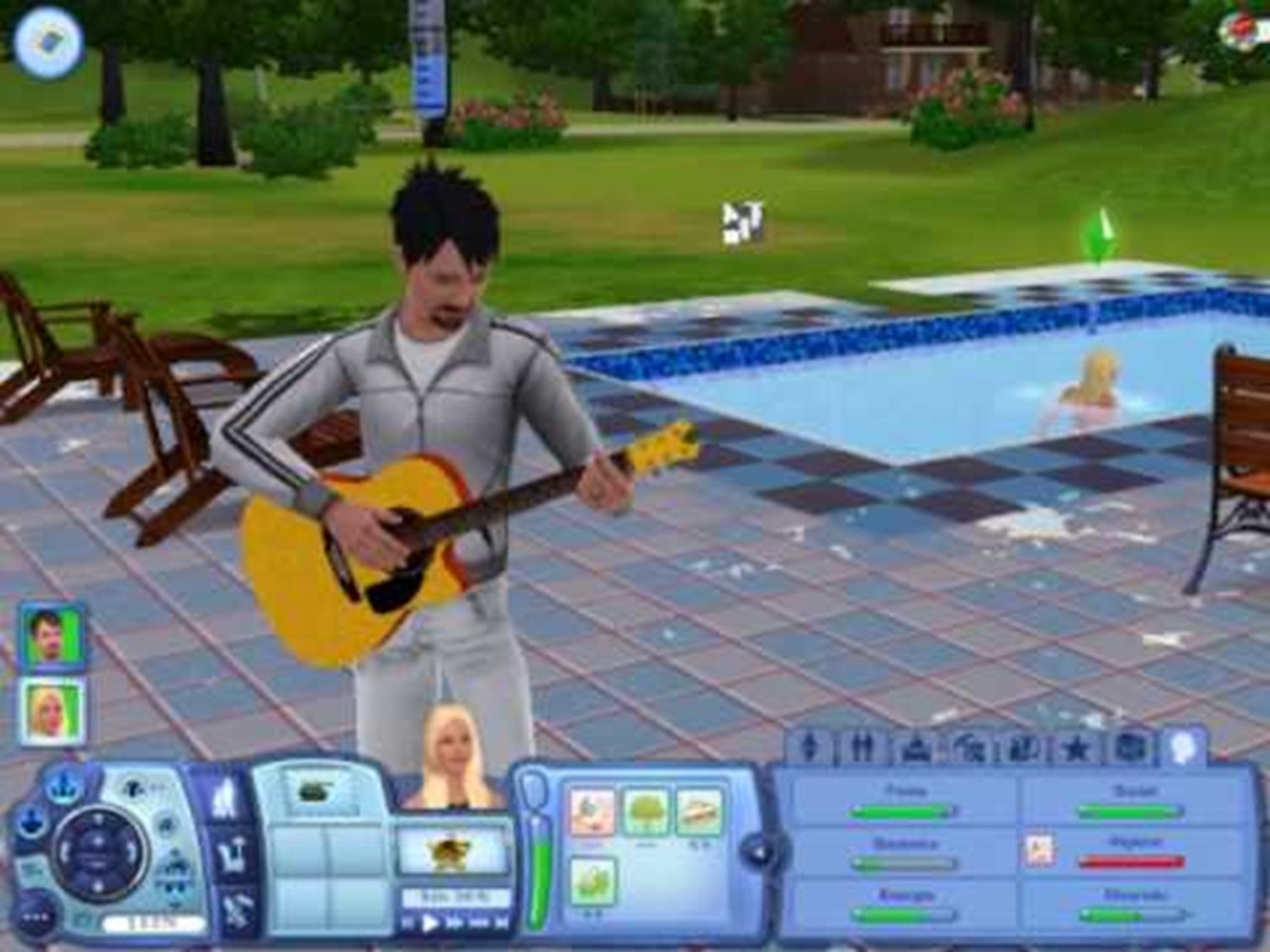is part of the Informa Markets Division of Informa PLC
This site is operated by a business or businesses owned by Informa PLC and all copyright resides with them. Informa PLC's registered office is 5 Howick Place, London SW1P 1WG. Registered in England and Wales. Number 8860726.

CONTEXTUAL AND PUBLICATION HISTORY
The Sims series is a casual sandbox game that imitates the everyday routine of an average person. This series is a pure embodiment of the phrase “art imitates life”, where the player is given the ability to create and control their own simulation world. The Sims series is a single player, Strategic Life Simulation game which fits into the sub category of Social simulation. It instantly gained a strong worldwide fanbase prompting the developers; Maxis and The Sims Studio to create expansions and spin-offs of the main titles. The initial success of The Sims and The Sims 2, led to the production of their most successful title, The Sims 3. While certain elements from the previous games were carried over, The Sims 3 managed to create an environment that was more realistic than its predecessors. The Sims 3, developed by The Sims Studio and published by Electronic Arts was released worldwide on 2nd June, 2009 on the PC and marked the first instance of an open world Sims game without in-game loading screens.
The main concept of The Sims series was to emulate real life without the harsh realities of violence and gore and allow players to create a perfect model life. This concept was carried over better with the female demographic of gamers than the male demographic, because most female gamers related The Sims to a digital version of “playing house”. The sister franchise of Sim City by Will Wright (also the creator and director of The Sims 3) was the main inspiration behind The Sims series. The first Sim City game was released in 1989, which allowed players to create cities on an urban scale without being able to look at Sims and their life on a human scale. This sparked an interest in the general audience of a scenario in the game where players would be able to control the Sims living in the city. While this idea of social behavioral models was incorporated in future titles like Sim Ant and Sim Copter, the next step in creating a perfect virtual world was providing the player with complete control of a virtual being, which prompted the release of the first title of the series, The Sims. And thus The Sims series became a household name, worldwide, causing players to become obsessed with the need of a perfect life, where they would imitate circumstances of their life in the real world and translate it into the virtual world.
PLATFORM
The Sims 3 is a multi-platform game; however, the PC version is the most critically acclaimed and developed in comparison to other versions. Other platforms that The Sims 3 is available on are Xbox360, Playstation 3, Nintendo Wii and even as an Apple/Android app. The console versions of the game differ significantly in gameplay and mechanics as opposed to the PC version. The PC version is far more graphically enhanced than the console versions.
In terms of display, control layout and interface, the PC version and the Xbox version are very similar, however, the console versions in general are not open world and thus do not allow the free roam that the PC is capable of allowing. The PC version has its drawbacks as opposed to the console versions as well. The achievements in the console version allow the game to be not so open ended and actually have a goal, to obtain a sense of accomplishment, while the PC version has no achievement criteria.
Minimum system requirements to run the game at optimum efficiency for PC, as that is the preferred medium for playing The Sims 3, are as follows; 2.4 GHz P4 processor or equivalent, 1.5 GB RAM, 128 MB Video Card with support for Pixel Shader 2.0, Microsoft Windows Vista Service Pack 1 and at least 6.1 GB of hard drive space with at least 1 GB of additional space for custom content and saved games.
GAME CODES
Since The Sims 3 allows players to modify the gameplay along with adding custom content, the game codes were released along with the game. This has been a tradition in The Sims series, where, other than the content present in the game, players are allowed to create their own content, ranging from hair to furniture. Several player made free tools or software that are used to create this custom content, for example, the Create-a-World tool or S3PE which allows players to create package files that can be used to modify The Sims 3.
The Sims 3 was developed using Mono’s (a free and open source software developed by Xamarin) application programming interface and C#. The main reason for using Mono was because it can run on multiple system software including Android, OS X, Windows, Playstation 3, Wii and Xbox360.

This images shows the source code for interacting with a fireplace in C# format.
GAME FORM (AND FUNCTION)
In The Sims 3, the game form is defined by different aspects and sections of the game, that is used to pin point the story and status of the character or “Sim” that the player is playing as. Compared to its predecessors, The Sims 3 focused on an overall experience of the town/city, rather than the norm of being confined to the character’s house. This gives the player several new options in terms of interaction, however, to allow the open ended game to run as smoothly as possible; some buildings were left as empty shells or “rabbit holes”. These rabbit holes would cause a Sim character to disappear in a building while the player will be given a set of options in the form of menus to choose from as the next step.
While the game may be open ended and without a clear cut goal, just like real life, Sims have wants, aspirations and needs. The Sims 2 showcased an aspiration system while its sequel, The Sims 3 improved that system by giving players the option to choose which aspiration or “wish” to fulfill. Fulfilling a Sim’s wishes grants them “Lifetime Happiness” which can be used to purchase rewards and perks to make the game easier than it already is. A further addition to The Sims 3, was Moodlets. Moodlets are a series of reactions that a Sim has to its actions and surroundings. Moodlets can be gained by something as minor as being in a well decorated room or something as major as a break-up. These moodlets, in turn, affect the mood and productivity of the Sim during the day, just like in real life, where if a person is in a bad mood, productivity is decreased. One feature that mirrors real life, which was not present in previous games, is Story Progression. In previous games, regardless of whether the player character had aged or accomplished day to day jobs over a long period of time, NPCs would never age and move on with their lives, however in The Sims 3, everyone present in the world autonomously continues advancing through the stages in life, just like the player character. This makes the game more realistic.
Create-a-sim is an option in the game that gives the player full freedom to create any kind, gender or race of sims. Different menus can be used to customize different aspects of the sim, including name, gender, build, height, clothing, hairstyle, likes and dislikes and even zodiac signs. With over 100+ different combinations of these options, each sim has their own personality and traits, thus making every sim in the game unique and different; not only looks wise but also behaviorally, which once again imitates real life. Aside from controlling an equivalent of a human being, the game offers an architectural approach as well. Players interested in architecture from scratch can use the Build/Buy modes to provide a humble accommodation for their sims. These modes can also be used to furnish pre-existing houses in the sims world.

This image shows the several tabs that can be used in Create-a-Sim
INTERFACE AND GAME TREES
As stated before, the game has no definite goals and so the game does not offer any guidelines on how to approach it as a newcomer to the franchise. However, the player can create their own story by giving the sim character certain rules and commands to follow. The player however, unlike conventional games, does not take the role of the sim they are playing as. Infact, the player character’s actions are similar to that of a puppet master, manipulating the puppet using strings, where the strings signify the interface the player uses to communicate orders to the sim.

This image shows the several tabs that can be used in Create-a-Sim
The panel at the bottom left corner of the screen is used to control sims and manipulate in-game settings. Starting from the top bottom left of the panel are the portraits of each member in the household of that particular family. Clicking on one of the portraits would select the sim and show their current condition. Double clicking on the portrait will allow the player to instantly go to the place where the sim is. Below the portraits are several ways the orientation and view of the sim world can be controlled; rotation, changing levels etc. Next to the orientation panel are the 3 main categories of the game that the player switches back and forth from.
The live mode is where the player is controlling the sim. Each sim has their own wish panel, where from time to time a wish will appear and if the player fulfills it, the sims gain “Lifetime Hapiness” as a reward. On the right of the Wish panel is the Lifetime Wish panel. This is a wish that is a particular sim’s life goal, for example, becoming an astronaut or a world renowned surgeon. Below the Lifetime Wish are the time controls. They display the time and the day of the week and can be sped up according to the player’s liking. The meter to the right of the time controls is what determines the mood of the sim, which is dependent upon the moodlets, with red being extremely foul mood and green at the top being the best mood. The buy mode is used for buying furniture and objects for a sim’s house. Buy mode cannot be accessed outside the home lot. Similarly build mode allows the player to build residential or commercial buildings from scratch.
In terms of game trees; since the game is open ended game, it offers infinite possibilities of story and interactions. No each game or save file or even a sim is similar to the other. This will give the player an opportunity to mold a new story every time they create a new save file.
RECEPTION AND OPERATION
The first instance of The Sims 3, before any advertisements and marketing strategies, was an easter egg in the seventh expansion pack of The Sims 2: Free Time, where a sim named Rod Humble would provide the player character with a gift that would contain a PC games called “The Sims 3”. If the player chooses to play the game, a beta gameplay video of The Sims 3 would play in a loop. Severa marketing strategies were undertaken in order to improves sales from The Sims 3, including advertisement on skyscrapers, namely in Times Square in New York City, and the game being used to create the characters of the CW show, One Tree Hill, in an episode that involves going back and forth between the real life counter parts of the sims. Digital media was also a large factor for promoting The Sims 3 before the release date, including trailers and gameplay footage and the inclusion of sim versions of celebrities like Hilary Duff and Katy Perry.
Electronic Arts has reportedly stated, that within the first week of release The Sims 3 managed to sell 1.4 million copies, thus making it EA’s most successful PC game launch. It remained the best-selling game throughout 2009 beating several other AAA titles in the process. Response from critics and gamers were generally positive, with Gamespot awarding the game the title of editor’s choice and giving the game 9.0/10 stating that "The latest Sims game is also the greatest, striking a terrific balance between the fresh and the familiar." (Gamespot). IGN also gave the game a positive review of 8.9/10 stating, “This is simply a better playing Sims experience, and once you experience the freedom to hit the town without hitting a load screen you’ll be hard-pressed to go back to any of the earlier games. Blowing up the size of the game was certainly a risk, but it was a sensible and overdue one, and kudos to EA for recognizing that the decade-old formula needed some growth. And while there's still plenty of room for more innovation, we’ll settle for The Sims 3 for now. It delivers a solid foundation for what should be many more years of Sims sales dominance.” (IGN).
PERSONAL OPINION
The original game of The Sims 3, if installed as a stand-alone game can offer a lot in terms of diversity. I have been playing this game ever since it was released and 5 years later I still very much enjoy it. Playing The Sims 3 can either be a very pleasant or a very frustrating experience depending on how much custom content or how many expansion packs have been installed. While it does offer a lot of variety with in game items in Create-a-Sim, ranging from being able to customize hair color and even clothing color which was not a possibility in The Sims 2, certain glitches in the game make it frustrating enough not to want to play all together.
Sometimes the Sims 3 can be a repetitive game, wherein after installing all the expansion packs and custom content that would give you more content to explore, you will eventually run out of things to do no matter the variety. Certain gamers stick to certain strategies while playing Sims. For example, I prefer choosing Bridgeport as my sim’s homeworld as it is a city setting as opposed to the rest of the worlds offered in The Sims 3, which are a countryside setting. On top of the lack of variety after a point, the game, no matter how high end a laptop is, does not run smoothly if over 1 GB of custom content has been installed. It takes 10+ minutes for the loading screen to load and another 5 minutes for the game to load all the lots of th world.
Overall, the game is a great experience if installed separately and played over a short period of time. Expansion packs, no matter how amazing the extra content is, are not worth the trouble of glitches and a slow computing speed.





.png)






.png)







